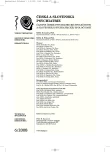Making Clinical Trials Relevant to Clinical Practice: NNT Can Help
Authors:
P. Mohr 1; L. Citrome 2
Authors‘ workplace:
Psychiatrické centrum Praha
3. LF UK, Praha
Centrum neuropsychiatrických studií
; ředitel prof. MUDr. C. Höschl, DrSc., FRCPsych
New York University School of Medicine the Nathan S. Kline Institute for Psychiatric Research, Orangeburg, NY
1; ředitel H. S. Koplewicz, M. D.
2
Published in:
Čes. a slov. Psychiat., 104, 2008, No. 6, pp. 308-312.
Category:
Comprehensive Reports
Overview
Clinicians are presented with research study reports suggesting advantages of one medication over another. There is an urgent need for clinicians to learn the intuitive and simple tools of Evidence-Based Medicine (EBM) that can be used on a day-to-day basis to evaluate clinical research evidence. One such technique is Number Needed to Treat (NNT). NNT is easy to calculate for categorical outcomes: it is the reciprocal of the percentage difference between the two outcomes. Clinical trial results expressed as NNT can be easily summarized and communicated effectively to patients and their families. Limitations include ensuring that the NNT is calculated from research that enrolls subjects similar to patients that one treats in actual clinical practice, with doses of medications similar to what is used in the “real world”. Direct calculation of NNT is limited to binary or dichotomous outcomes. However, NNT can be used to assess both advantages and disadvantages between two competing interventions. A single digit NNT (less than 10) will mean that you will encounter this difference between interventions in routine clinical practice. Before accepting that a statistically significant clinical trial result is important to you and your patients, calculate the NNT. NNT will tell you if the clinical trial result is compelling or if it is irrelevant.
Key words:
evidence-based medicine (EBM), number needed to treat (NNT), number needed to harm (NNH), clinical trials, treatment efficacy.
Sources
1. Citrome, L., Stroup, T. S.: Schizophrenia, Clinical Antipsychotic Trials of Intervention Effectiveness (CATIE) and number needed to treat: how can CATIE inform clinicians? International Journal of Clinical Practice, 60, 2006, pp. 933-940.
2. Citrome, L.: Can you interpret confidence intervals? It’s not that difficult. Current Psychiatry, 6, 2007, pp. 77-82.
3. Citrome, L.: Comparison of intramuscular ziprasidone, olanzapine, or aripiprazole for agitation: a quantitative review of efficacy and safety. Journal of Clinical Psychiatry, 68, 2007, pp. 1876-1885.
4. Citrome, L.: Show me the evidence: using number needed to treat. Southern Medical Journal, 100, 2007, pp. 881-884.
5. Citrome L.: Interpreting and applying the CATIE results: With CATIE, context is key, when sorting out phases 1, 1A, 1B, 2E, and 2T. Psychiatry MMC, 4, 2007, pp. 23-29.
6. Citrome, L.: Compelling or irrelevant? Using number needed to treat can help decide. Acta Psychiatrica Scandinavica, 117, 2008, pp. 412-419.
7. Cookson, J., Gilberte, I., Desaiah, D., Kajdasz, D. K: Treatment benefits of duloxetine in major depressive disorder as assessed by number needed to treat. International Clinical Psychopharmacology, 21, 2006, pp. 267-273.
8. Cookson, J., Keck, P. E., Ketter, T. A., Macfadden, W.: Number needed to treat and time to response/remission for quetiapine monotherapy efficacy in acute bipolar depression: evidence from a large, randomized, placebo-controlled study. International Clinical Psychopharmacology, 22, 2007, pp. 93-100.
9. Gilbert, P. L., Hartus, M. J., McAdams, L. A., Jeste, D. V.: Neuroleptic withdrawal in schizophrenic patients. Archives of General Psychiatry, 52, 1995, pp. 173-188.
10. Gray, G. E., Pinson, L. A.: Evidence-based medicine and psychiatric practice. Psychiatric Quarterly, 74, 2003, pp. 387-399.
11. Kraemer, H. C., Kupfer, D. J.: Size of treatment effects and their importanfce to clinical research and practice. Biological Psychiatry, 59, 2005, pp. 990-996.
12. Lieberman, J. A., Stroup, T. S., McEvoy, J. P., Swartz, M. S., Rosenheck, R. A., Perkins, D. O., Keefe, R. S., Davis, S. M., Davis, C. E., Lebowitz, B. D., Severe, J., Hsiao, J. K., CATIE Investigators: Effectiveness of antipsychotic drugs in patients with chronic schizophrenia. N. Engl. J. Med., 353, 2005, pp. 1209–1223.
13. McEvoy, J. P., Lieberman, J. A., Stroup, T. S., Davis, S. M., Meltzer, H. Y., Rosenheck, R. A., Swartz, M. S., Perkins, D. O., Keefe, R. S., Davis, C. E., Severe, J., Hsiao, J. K., CATIE Investigators: Effectiveness of clozapine versus olanzapine, quetiapine, and risperidone in patients with chronic schizophrenia who did not respond to prior atypical antipsychotic treatment. Am. . Psychiatry, 163, 2006, pp. 600–610.
14. Stroup, T. S., Lieberman, J. A., McEvoy, J. P., Swartz, M. S., Davis, S. M., Rosenheck, R. A., Perkins, D. O., Keefe, R. S., Davis, C. E., Severe, J., Hsiao, J. K., CATIE Investigators: Effectiveness of olanzapine, quetiapine, risperidone, and ziprasidone in patients with chronic schizophrenia following discontinuation of a previous atypical antipsychotic. Am. J. Psychiatry, 163, 2006, pp. 611–622.
15. Stroup, T. S., Lieberman, J. A., McEvoy, J. P., Swartz, M. S., Davis, S. M., Capuano, G. A., Rosenheck, R. A., Keefe, R.S., Miller, A. L., Belz, I., Hsiao, J. K., CATIE Investigators: Effectiveness of olanzapine, queti apine, and risperidone in patients with chronic schizophrenia after discontinuing perphenazine: a CATIE study. Am. J. Psychiatry, 164, 2007, pp. 415-427.
Labels
Addictology Paediatric psychiatry PsychiatryArticle was published in
Czech and Slovak Psychiatry

2008 Issue 6
Most read in this issue
- Cannabinoids and Mental Disorders
- Dissociation and Cognitive Function in Obsessive-compulsive Disorder – cross-sectional study
- Making Clinical Trials Relevant to Clinical Practice: NNT Can Help
- Psychiatric Patient and Work Performance
